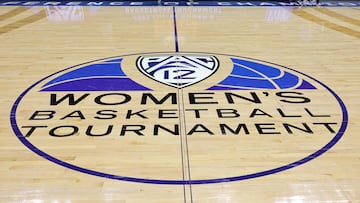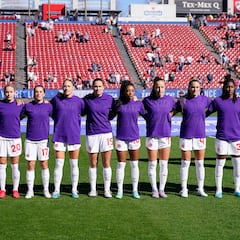The disparity in women’s and men’s sports
Progress is being made in women’s sports, with a steady increase in popularity over the last 50 years, but media coverage is still significantly lacking.


Gender inequality in sports is nothing new. While women’s sports have steadily been increasing in popularity since the passing of Title IX in 1972, there is still a large disparity in men’s and women’s sports in the media. The assumed gender when speaking about any sport in the U.S. is men, unless there is the word “women” in front of it - NBA vs WNBA, March Madness vs Women’s March Madness, World Cup vs Women’s World Cup, etc. When speaking about women’s sports, we have to specify, whereas with men, they are still considered the default.
Media coverage of men’s sports vs women’s sports
According to a study conducted by Purdue University in March 2021, coverage of women’s sports in the media has barely changed since the 1980s. The study found that in 2019, women’s sports coverage only totaled to 5.4% of airtime, as compared to the 5% in 1989 and 5.1% in 1993 - quite a small percentage of change. The Women’s World Cup accounted for a huge chunk of that percentage, as it drops to 3.5% when removed that year. The study also found that digital media coverage had the same disparity, despite the lack of time constraints.
“When a women’s sports story does appear, it is usually a case of ‘one and done,’ a single women’s sports story obscured by a cluster of men’s stories that precede it, follow it, and are longer in length,” said Cheryl Cooky, director of the study.
According to the car company Buick, as of just last year in March 2022, female athletes receive less than 10% of total media coverage despite representing over 40% of players.
How does lack of representation in sports affect women?
There are several consequences to the lack of coverage in women’s sports, one of which is the obvious lack of popularity/viewership. In that same study by Purdue, the quality of the coverage is discussed, finding that women’s coverage is “lower in technical quality and production value” as compared to men’s coverage. Of course, the debate is whether more media coverage results in less interest in women’s sports or if more interest in women’s sports would come first, then there would be more media coverage.
According to GWI Sports, 69% of men prefer to watch men’s-only sports, while 72% of women prefer mixed tournaments, but there is a large lack of interest in women’s-only sports from both males and females. 31% of males say that the quality and skills in a women’s sport does not match those of the men’s in the same sport, whereas only 15% of females think that. Without equal media coverage, it is difficult to say whether or not interest in women’s sports would be the same or closer to interest in men’s sports, but trends show that it certainly would help. The most common reason people gave for not watching female sports was the lack of coverage.
The Women’s Sports Foundation reported that by age 14, girls were dropping out of sports at twice the rate as boys. There were several reasons for that disparity, including lack of opportunites, safety concerns, social stigma, and the pressure to achieve an unrealistic body standard. While these issues are not 100% unique to females, they are issues that they encounter much more frequently than their male counterparts.
How female athletes are portrayed is part of the problem
Another result of the lack of coverage for women’s sports is a lack of role models for young female athletes. Not only is it more difficult to find women to look up to, but the way in which women are represented in the media can also be discouraging. The Purdue study shows that in the 1980s and 90s, female athletes were sexualized or made out to be the subject of jokes. By the 2000s, there was a shift which remains still now, with the focus on female athletes as wives or girlfriends and mothers. Rather than highlighting their performance and talents, the media highlights females’ expected gender roles, family life, age, and appearance.
A 2018 study found that female athletes are “more likely to be depicted in sexually objectified ways” in Sports Illustrated magazines, with female Olympic athletes posed in ways unrelated to their sport. Men, on the other hand, are typically posed in action in a way that highlights their strength. A similar study conducted in 2019 found that social media images from primary sports media accounts in which female athletes were covered, nearly half were in passive poses which had nothing to do with their sport. Men, however, were in athletic poses in 80% of the photos.
For women of all ages, seeing athletes who represent them can inspire them to make their own athletic goals and motivate them to participate in sports at all. Increased coverage with an emphasis on women’s athletic performances (rather than their appearance or familial status) would lead to not just increased viewership, but also a change in perception on female sports in general as something to be respected and celebrated, not simply something to be compared with men’s sports.
Some good news for women’s sports
Related stories

Canada agree interim funding deal ahead of Women’s World Cup
The good news is that progress, though slow, is being made. In the U.S., huge steps have been taken recently in women’s sports, with U.S. soccer becoming the first federation to offer equal prize money to female World Cup teams in 2022. The U.S. Women’s National Team and the FIFA World Cup garner more interest than any other women’s sporting event, and the 2019 game saw a 22% increase from the Men’s Final in 2018, according to Forbes. 2022 was the first year in which the NCAA Championship used the “March Madness” moniker for the women’s tournament (though it’s been using it for the men’s for decades) and the women’s final was watched by 4.85 million people, the most watched championship game since 2004 and an 18% increase from 2021. The WNBA reported a 51% increase in viewership in 2021 from the start of the league 25 years prior. This trend can be found throughout all women’s sports.
“Everyone needs to play a part at this stage in the women’s sport journey to grow the industry,” said Chris Hurst, trustee at the Women’s Sport Trust. “By 2030, the value of women’s sport could treble if everyone in the sports industry plays a role.”


